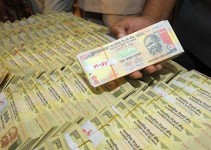Taxes in India are levied by the Central Government and the state governments. Some minor taxes are also levied by the local authorities such as the Municipality.
STATE OF TAXATION IN INDIA
- In India, there are multiple problem in taxation system that make it ineffective, inefficient and inequitable.
- It became a source of distortion in the market or result in market failures.
- The modern tax systems comprise of very broad-based taxes on income and consumption, levied at uniform and moderate rates. In India, taxes on both income and consumption fall far short of this ideal. The base is narrow and the rates very high.
- The state of Indian tax administration is also reflected in the World Bank Report on Doing Business in India, 2015 which ranks India at a dismal 156 out of 189 countries in terms of ease of paying taxes.
REFORMS
- The governments have embarked on the reform of the tax system and there have been extensive debates surrounding the reforms.
- Two landmark reforms are the Goods and Services Tax (GST) and the Direct Taxes Code (DTC).
ISSUES
GST
- The model that is being talked about will have some important exclusions from the tax base (e.g. real property, alcohol and petroleum).
- The states have also proposed tax to be levied at multiple rates – a lower rate for basic necessities and higher rate for other goods and services. A recent OECD report points out that the exemptions and lower tax rates under VAT(value-added tax)/ GST, while designed to help those in the lower-income brackets, benefit disproportionately those in the higher-income brackets.
- The governments are considering the revenue neutral rates to be as high as 27 per cent. It is difficult to implement and application of such a high tax rate to the service sector would be highly detrimental.
DTC
- Most of the reform proposals in the Direct Taxes Code have been modified to such an extent that what is left is only a little different from the status quo and amounts to little more than re-wording of the same provisions.
- Another landmark reform is the DTC, proposed by the government in 2010. The design of this income tax reform has been contentious from the very inception. While its objectives were to broaden the base and lower the rates, there was no consensus on how the base should be broadened.
- Most of the reform proposals in the DTC have been modified to such an extent that what is left is only a little different from the status quo and amounts to little more than re-wording of the same provisions. Rather than proceeding with this package, there is a need to go back to the drawing board and redesign the direct tax system so that it has a broad base and moderate tax rate of around 25 per cent. Also, in the global economy of today, the Indian tax system should be fully aligned with that of our trading partners.
RECOMMENDATIONS OF TARC
|
The Tax Administration Reforms Commission (TARC) (Chairperson: Dr Parthasarathi Shome) submitted its First Report on May 30, 2014.Observations: TARC made the following observations:
Recommendations:
|
|||
| MAJOR RECOMMENDATIONS |
|
TARC made the following recommendations:
Consumer Focus:
- There should be a separate vertical for delivery of taxpayer services in each Board. A minimum of 10% of the tax administration’s budget must be spent on taxpayer services.
- The decision of the Ombudsman with regard to redressing taxpayer grievances should be binding on tax officers.
- Pre-filled tax returns should be provided to all individuals. The taxpayer will have the option of accepting the tax return or modifying it.
Structure and Governance:
- CBDT and CBEC should be fully integrated in 10 years. Within the next 5 years, they should move towards a unified management structure under the Central Board of Direct and Indirect Taxes.
- The post of Revenue Secretary should be abolished and its functions should be assigned to the two Boards. A Governing Council to oversee the working of the two Boards, and a Tax Council to suggest policy and legislation should be set up.
Human Resource Development:
- There should be a focus on specialisation, including lateral entry of specialists in the Boards. Indian Revenue Service (IRS) officers should specialise in a particular tax administration areas.
- The Central Vigilance Commission should have a Member who has been an IRS officer. The policy of not taking cognizance of anonymous complaints should be strictly followed.
Dispute Resolution and Management:
- Retrospective legislation should be avoided.
- Both Boards should start a special drive for review and liquidation of cases currently clogging the system by setting up dedicated task forces.
- A separate dispute management vertical should be set up in each Board. In addition, the process of pre-dispute consultation before issuing a tax demand notice should be put into practice.
Internal Processes: The Permanent Account Number (PAN) should be developed as a Common Business Identification Number (CBIN), to be used by other departments such as customs, excise, etc.


